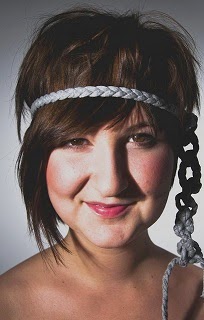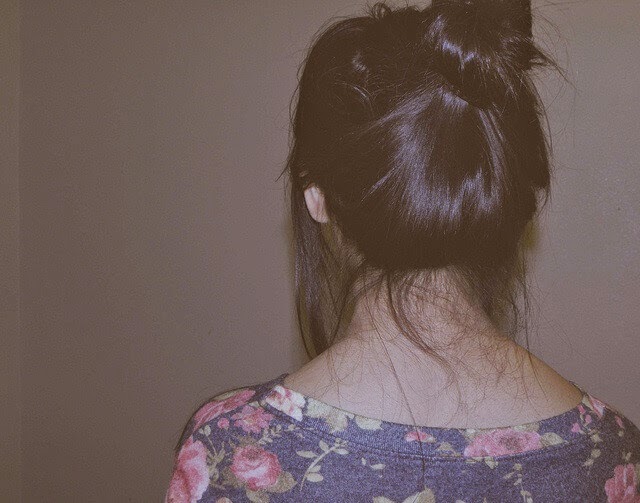
|
| [1] |
In fact, they actually repair existing damage and can greatly improve the condition of your hair, leaving it feeling better than it did before using the product.
How do keratin treatments work?
Hair is made of a protein called keratin. This protein forms the strong yet elastic structure of hair and gives it all its natural qualities, including causing it to look straight or curly. This natural texture is due to chemical bonds between keratin in your hair.
Keratin itself, as a protein, is comprised of amino acids. An amino acid called cysteine forms disulfide bonds with other cysteine molecules. The more bonds that are present, the curlier your hair becomes as these bonds attract keratin molecules to each other.
A keratin hair treatment works by introducing more keratin into your hair, as well as different kinds of keratin. This extra keratin is set into your hair in a way that temporarily changes the texture and smooths out curls and waves because the combined structure of the natural keratin and added keratin interacts differently.
This process prevents bonding from occurring in a way that produces curls and your hair becomes straight as a result. The effect is temporary and over time the keratin that was added to your hair will wash out, lasting anywhere from a few weeks to a few months.

|
| [2] |
Keratin treatments vs relaxers
Keratin treatments produce the same results as a relaxer, but they are fundamentally different in terms of how they work. Whilst a keratin hair treatment creates new bonds without actually removing the existing bonds in your hair, a relaxer intentionally destroys bonds.
A relaxer works by reducing the bonds in your hair, which breaks them down. Once the bonds are broken, the hair is smoothed out and exposed to oxidation to reset the bonds in the new straight texture.
The relaxing process is permanent as the former bonds no longer exist, whereas a keratin treatment doesn't actually destroy the natural bonds in your hair. This is also predominately why a relaxer causes damage. A keratin hair treatment doesn't cause damage because it doesn't change the structure of your hair.
Keratin straightening treatment
- Straightens hair
- Non-damaging
- Repairs damage
- Lasts up to 3 months
- Can be used on colored or lightened hair
Relaxer
- Straightens hair
- Results are permanent
- Very damaging
- Can't always be applied to colored, lightened, or naturally weak hair
Keratin hair treatment cost

|
| [3] |
Most hairdressers will charge at least $300 for the treatment. Keratin products like shampoo and conditioner are a separate added cost after the service. These products help the treatment last longer, and whilst they will benefit your hair and keep the results for longer, they do increase the amount you will spend in total.
Applying a keratin hair treatment yourself however, is extremely cheap for the results, costing anywhere from $30 - $100 for the actual treatment product, and other products that maintain the treatment. Without being too difficult to apply, this is a better route for anyone on a budget.
Formaldehyde
The first keratin hair treatments contained formaldehyde, and this was potentially detrimental to health when the fumes are inhaled. Luckily, this is a non-issue these days as the great majority of keratin hair products don't contain any formaldehyde.
As there are still a handful of these original styled products likely remaining on the market however, you should always be sure the treatment you're using is formaldehyde-free for peace of mind. If you have it done in the salon, ask your hairdresser what they use. If you apply the treatment at home, read the ingredients.

|
| [4] |
How the treatment is applied
In order to apply a keratin treatment, your hair needs to be shampooed first to remove any buildup of product and conditioner or natural oil. This is necessary for the keratin to penetrate your hair properly, and important for the setting phase as the hair needs to be clean so that it can be left unwashed while the treatment sets.
Following shampooing, the treatment is applied to your hair while it is still slightly damp, and then massaged and combed through to ensure it is evenly distributed. Then your hair is flattened out and blow dried straight to dry it with the keratin still in your hair.
Finally, the keratin treatment is then set into the hair and properly activated by using a flat iron at high heat. It needs to be straightened flawlessly in order to get perfect results. Once it is straightened, it is then left for a number of days to finish setting.
During the resting phase, you can't wash your hair or otherwise allow it to get wet or else you will ruin the results. You also need to ensure that your hair remains completely straight as any kinks or curls that are allowed to develop in this time can set into your hair.
Once the wait is over, you can wash and style your hair as usual and benefit from smooth, straight hair. Keratin shampoo and conditioner will help the treatment last longer, whilst you should avoid any product that contains cooking salt (Sodium chloride), as this will leach the treatment out of your hair.
If you look after your new treatment, your hair will remain smooth for up to 3 months depending on the brand of the treatment and how serious you are about avoiding salt and using maintenance products.
More information:
- How to get healthier hair - Find out how to repair damage and treat the common problems that can affect your hair...
- How to get rid of frizz - The best ways to treat frizz and smooth out wild hair...
- Treating dry hair - Discover the best ways to treat dry, stressed hair and give it a new lease on life...
Have a question about the keratin hair treatment, or wondering whether it is right for you? Leave a comment for tailored advice...
No comments:
Post a Comment